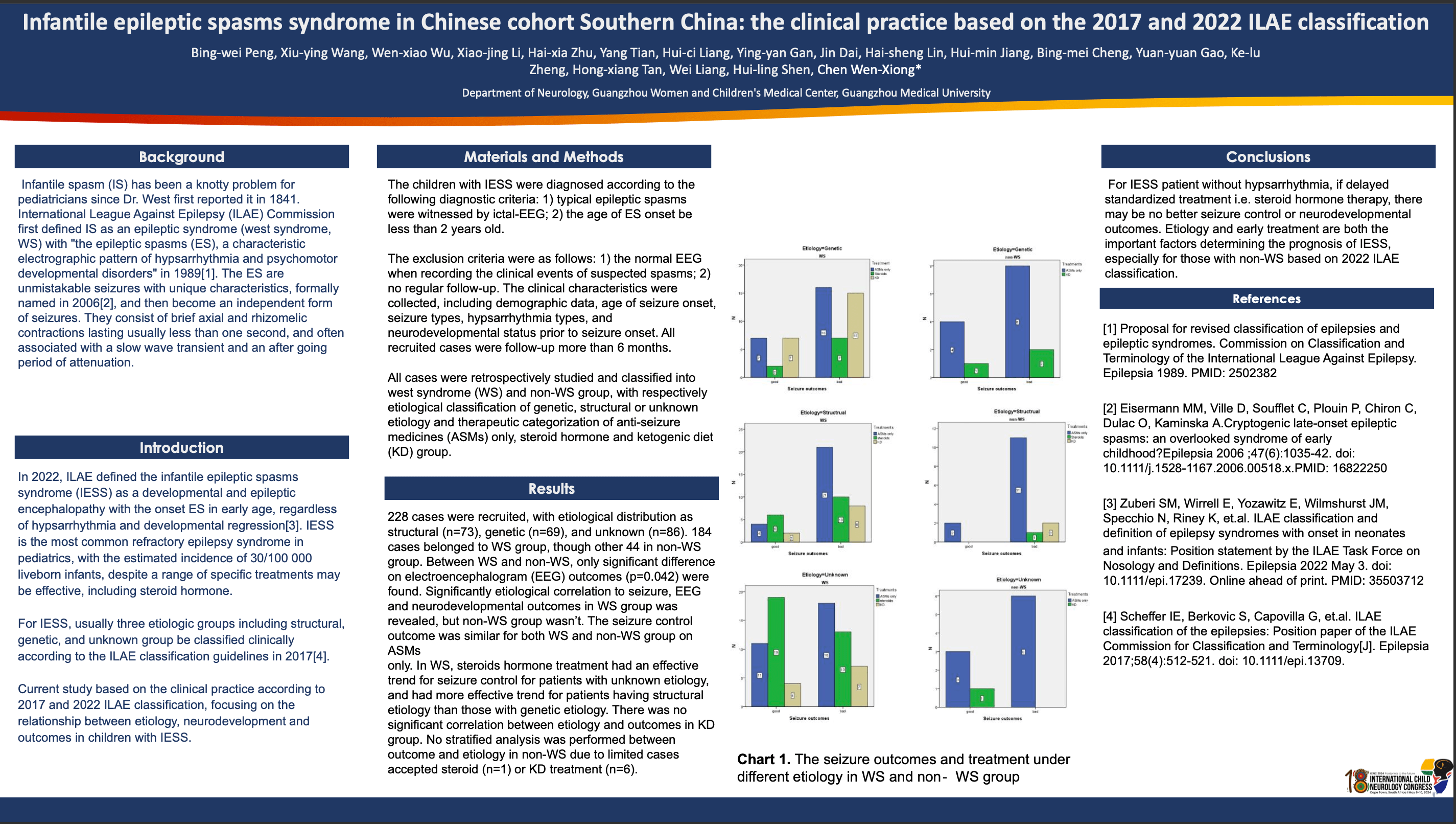Infantile epileptic spasms syndrome in Chinese cohort Southern China: the clinical practice based on the 2017 and 2022
Objective To explore relationship between clinical features, etiologies and prognosis in infantile epileptic spasms syndrome (IESS) cohort.
Methods All cases were classified into west syndrome (WS) and non-WS group, with etiological classification of genetic, structural or unknown etiology and therapeutic categorization of ASMs only , steroid hormone and ketogenic diet (KD) group.
Results 228 cases were recruited, with etiological distribution as structural (n=73), genetic (n=69), and unknown (n=86). 184 cases belonged to WS group, though other 44 in non-WS group. Between WS and non-WS, only significant difference on EEG outcomes were found. Significantly etiological correlation to seizure, EEG and neurodevelopmental outcomes in WS group was revealed, but non-WS group wasn't. The seizure control outcome was similar for both WS and non-WS group on ASMs only. In WS, steroids hormone had an effective trend for seizure control for patients with unknown etiology, and had more effective trend for patients having structural etiology than those with genetic etiology. There was no significant correlation between etiology and outcomes in KD group.
Conclusions For IESS patient without hypsarrhythmia, if delayed standardized treatment i.e. steroids hormone, there may be no better seizure control or neurodevelopmental outcomes. Etiology and early treatment are both the important factors determining prognosis of IESS, especially for those with non-WS on 2022 ILAE classification.
Bingwei Peng
Guangzhou Women and Children's Medical Center
China
Xiuying Wang
Guangzhou Women and Children's Medical Center
China
Wenxiao Wu
Guangzhou Women and Children's Medical Center
China
Xiaojing Li
Guangzhou Women and Children's Medical Center
China
Haixia Zhu
Guangzhou Women and Children's Medical Center
China
Yang Tian
Guangzhou Women and Children's Medical Center
China
Huici Liang
Guangzhou Women and Children's Medical Center
China
Yingyan Gan
Guangzhou Women and Children's Medical Center
China
Jin Dai
Guangzhou Women and Children's Medical Center
China
Haisheng Lin
Guangzhou Women and Children's Medical Center
China
Huimin Jiang
Guangzhou Women and Children's Medical Center
China
Bingmei Cheng
Guangzhou Women and Children's Medical Center
China
Yuanyuan Gao
Guangzhou Women and Children's Medical Center
China
Kelu Zheng
Guangzhou Women and Children's Medical Center
China
Hongxiang Tan
Guangzhou Women and children's Medical Center
China
Wei Liang
Guangzhou Women and Children's Medical Center
China
Huiling Shen
Guangzhou Women and Children's Medical Center
China
Wenxiong Chen
Guangzhou Women and Children's Medical Center
China

Prem Chand
the Aga Khan University
Pakistan